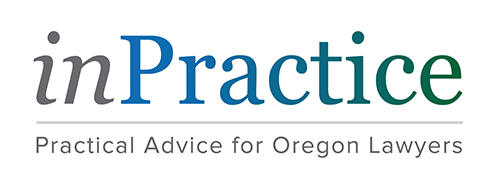Meeting with a potential client may sometimes feel like walking a tightrope. It can be difficult to end the intake without any misunderstandings or unintended promises. When someone believes an attorney-client relationship has formed but you do not, a real danger exists. As the attorney, it is your role and responsibility to clearly communicate when an attorney-client relationship is established and when it is not, no matter the marketing medium.
ABA TECHSHOW BYTES!
See a few takeaways from the 2022 ABA TECHSHOW that you may want to incorporate into your practice, particularly regarding evaluating your technology, software for managing new clients, and virtual receptionists.
Don't Underestimate the "Obvious": Document, Document, Document
Many malpractice claims arise from a client’s or third party’s allegation about what occurred, or didn’t occur, during the representation. While it may not seem necessary to document things that did not occur, or in situations involving third parties rather than just your client, proper documentation of these events can help protect you from certain malpractice traps.
Positive Takeaways from COVID
The last couple of years have been challenging for many people in different ways. While it can be difficult to look back on this time from a “glass half full” perspective, we can use our collective experience during the pandemic as an opportunity to reflect positively on the changes as they apply to the workplace.
Ready, Aim, Fire...or Maybe Not: The Ordeal of Terminating a Client
It’s fairly easy for clients to fire their attorney. Some clients might issue an overt announcement like “you’re fired!” Others might just make a polite statement that sounds more like a request such as, “Would you please give me my file so I can find another lawyer?” On the other hand, it’s not always easy for lawyers to fire their clients.
How to Prevent Losing Track of Your Client
“We sent a letter to our client regarding settlement and it was returned with no forwarding address.” “I am trying to close my trust account and I still have $500 belonging to a client I can’t find.” “I have a court hearing in ten days and my client’s cell phone has no voice mail box set up.” “My client no longer works for the employer he gave us.” "My client was deported." “Help! I don’t know how to find my client!”
Client Intake: Making it More Effective and Efficient
Client intake is an important process within a law firm. Just as with other industries and in our personal lives, first impressions speak volumes. According to the 2019 Clio Legal Trends Report, 42% of consumers surveyed say that if they like the first lawyer they speak with, they won’t need to speak with any others. Implement these tips to streamline and make your intake process more effective.
Better Beginnings for Onboarding New Clients
Lawyer-client relationships deserve good beginnings. Good beginnings may seem unachievable on the days when we are strapped for time and feel pressed to get to the lawyering. Relax. Let’s strive for better beginnings for onboarding new clients.
Using Interpreters or Translators
If you find yourself in a matter that may require the use of an interpreter or translator, consider these guidelines and resources to help you understand and streamline the process.
Options for Getting Paid
Since 2016, Clio has been doing annual surveys that found that lawyers, on average, bill only 30% of their time and collect on about 85% of those billed hours. The reason for this isn’t because solo attorneys and lawyers in smaller firms are slacking off. It’s because they spend part of their workday on nonbillable work that cannot be delegated due to a lack of staff. It’s also because lawyers are not always diligent in entering their time, invoicing, and collecting on their bills.
Managing Client Expectations
Communication is an important part of establishing and maintaining good relationships with your clients. Most if not all attorneys have represented a client who became upset after not receiving an immediate response to an email or phone call, even if the expected turnaround time is unrealistic. Managing client expectations about how you communicate can avoid the stress of miscommunication or clients feeling neglected.
5 Tips to Better Billing
If your billing rate isn't matched by your collection rate, you may have a problem with your billing. Here are five tips that can help you send out bills that get paid promptly in full.
Responding to Requests for the Client File
Lawyers routinely receive requests to share materials from the client file. Sometimes clients ask the lawyer directly, but other times the request comes from new counsel or third parties. Evaluating these requests requires you to consider who is entitled to the client file, as well as what documents and materials belong in the client file. Furthermore, you must also ask whether any limitations prevent you from releasing the complete contents of the client file.
Communicating Effectively and Professionally
The legal world is changing quickly on many fronts, most notably technology. The way we communicate is greatly impacted as a result. Unfortunately, it has also highlighted a divergence among different generations of attorneys, particularly regarding the most appropriate form of communication in different contexts.
Send Text Messages to Your Clients without Using Your Cell Phone
Have you ever wanted to text an appointment reminder or a quick message to your clients without having to use your cell phone? There is an easy and free way to do this. It’s called Email-to-SMS Gateway.















